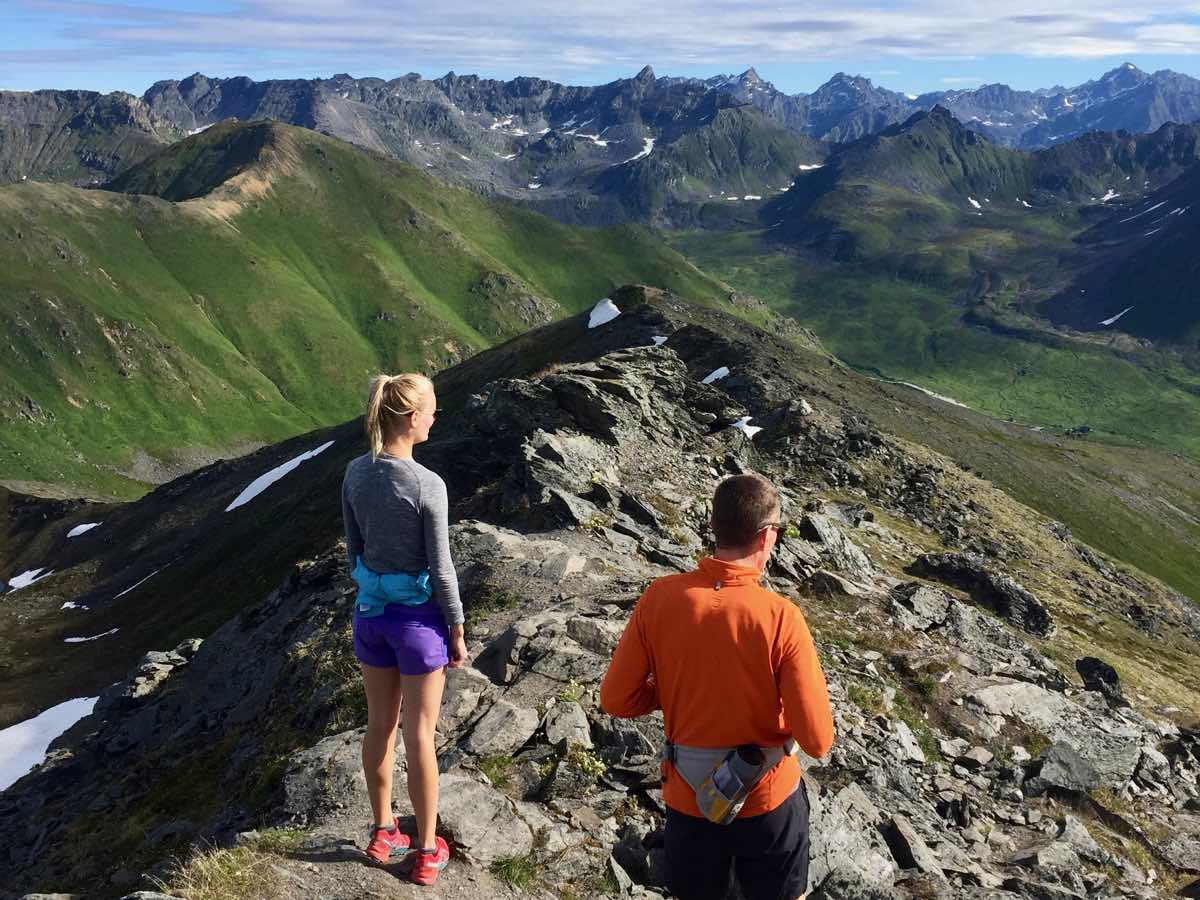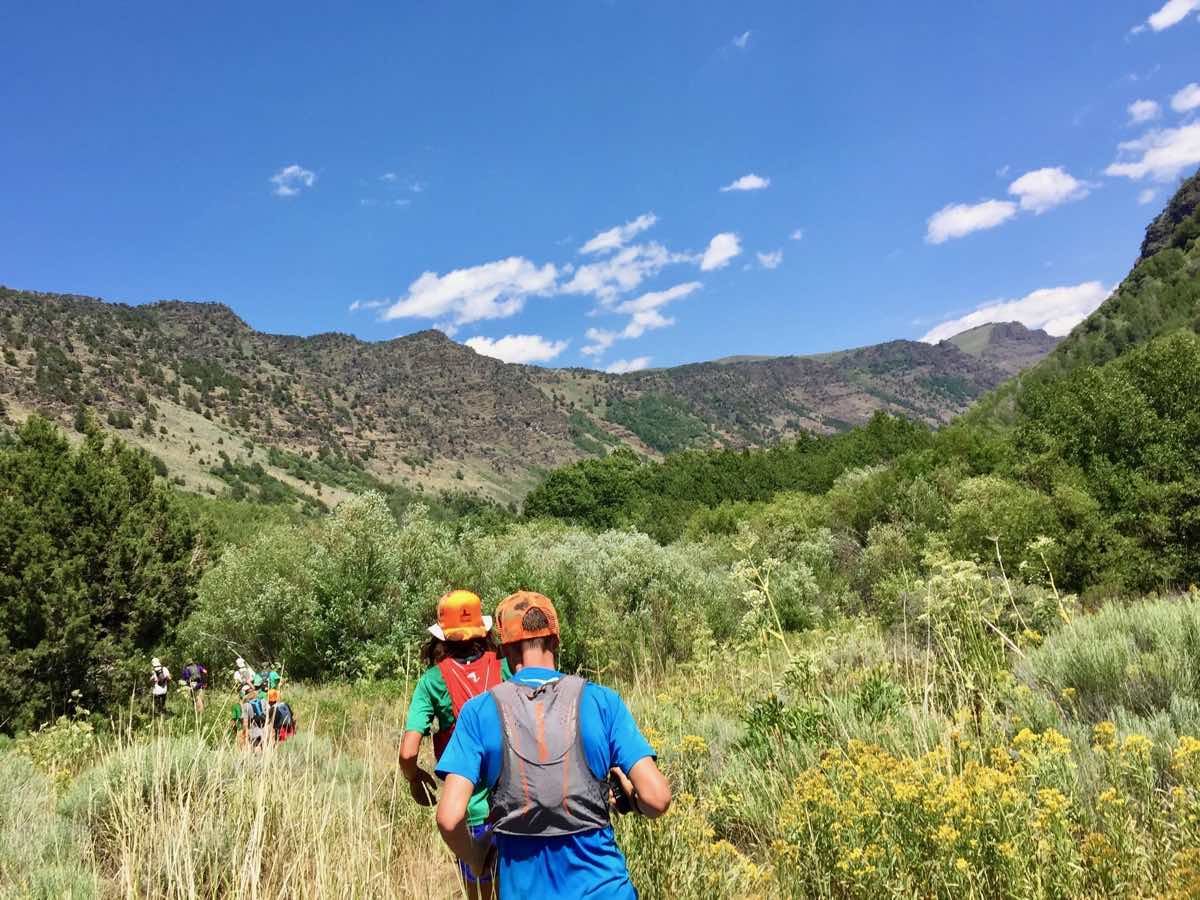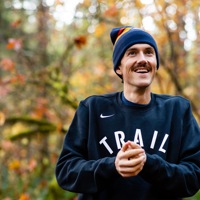[Editor’s Note: Whether it’s David Laney’s new column, Tracy Høeg and Corrine Malcolm’s “Running on Science” articles, Ian Torrence’s training column, or Joe Uhan in “Stay the Course,” education is a core component of iRunFar’s mission. If you value learning from iRunFar, please consider becoming an iRunFar patron on Patreon during iRunFar’s end-of-year fund drive.]
You’ve decided to sign up for your first trail race, congratulations! Signing up for a trail race was a decision I am thankful for every day.
Now you have the difficult decision of deciding which one you want to run. First off, think about what you might like. Do you think you might like a big event with a polished finish or maybe a smaller hometown event where the race director’s parents serve homemade soup and give high fives at the finish line? Are you considering a 50-kilometer race or does a trail 10 miler sound a little more reasonable? Do you want big hills or mountains to climb and a backcountry experience? Or do smooth trails with a hot shower at a hotel near the finish line sound more fun to you? These are just a few of the important considerations when choosing the right trail experience.
As you search for your first trail race, read this previous Trail Running 101 article “Chasing Trail: How to Choose Your First Trail Race”, which dives into the specifics of choosing a race based on its distance, altitude, terrain, location, weather, and more. In this article, we expand on those ideas and we also hear from a few wise and experienced trail runners about how they chose their first trail races.
There are a variety of resources to help you to research races. The calendars on UltraSignup and UltraRunning Magazine are pretty comprehensive and allow you to filter based on your desired region, distance, month, and even difficulty. In my experience, the majority of organized events can be found on these sites. Carve out an hour for yourself to explore these calendars and see what races are out there.
Another must-do is to ask your trail friends what races they have done and what they might recommend for you. It’s quite likely that someone you know will have a recommendation that really fascinates you. If you haven’t made trail running friends yet, stop by your local running store. When I was first scoping out trail 5ks–before the growth of internet, yes I’m old–the local race calendar was pinned to the bulletin board at the back of the running store. In most shops, it still is! Also, running-store employees are runners, of course, and I’ll bet some of them run trails. Asking the employees might yield some great trail-race ideas, too.
Now, let’s look to some trail running ringers–we’re talking about 100-mile champions and other super-experienced trail runners–who share how they chose their first trail race.
Kaci Lickteig is nicknamed the Pixie Ninja because she is small, always smiling, and fierce. The 2016 Western States 100 champion says, “My first trail race was the Psycho Wyco 50k in Kansas on February 11, 2012. I had just come off of running the Olympic Marathon Trials in January and was looking to try something different. Several running friends started talking about this race. I was worried about running on trails and that [longer] distance. Sure enough, I easily gave into the peer pressure and it was the best thing I have ever done. I had the time of my life and it kick-started my ultra-trail running career!”
Timothy Olson is an innovator of mindful and meditative running and a two-time Western States 100 winner. He explains, “I picked the Siskiyou Out Back 50k starting and ending at the top of Mt. Ashland, an out and back along the Pacific Crest Trail with epic views of Mount Shasta. I picked it as it was a local race, where I first heard of trail and ultrarunning and where I fell in love with the trails, forest, and mountains in the beautiful state of Oregon. Ashland’s trail runners inspired me to try trail running and taught me to give back to the community through trail work and land stewardship. It was a logical and easy choice to pick this one for my first ultramarathon attempt. I had a whole town cheering and supporting me and I was running in one of the most inspiring-to-me places on earth.”
To Timothy and Kaci, being in a community and with their friends were big factors in their decision. Looking back at all the races I’ve done, I have to agree that the most enjoyable have been those where I was able to hang out with friends at the finish line. While this sport inspires and motivates, it can occasionally eat you up and spit you out. Surrounding yourself with a group of trail friends won’t leave you feeling like a chewed-up sunflower seed under the bleachers at a dingy high-school baseball diamond. Whatever speaks to you the most, don’t be afraid to follow your heart and sign up.
Now that you know which trail race will be your first, it’s time to prepare for race day. Your alarm went off at 3:45 a.m., you nervously sipped a bit of coffee and tried to get some breakfast down. You’ve got your headlamp on, standing in a never-ending porta-potty line. You can’t help but wonder what you’ve gotten yourself into.
Here are a few things to remember for your first trail race. If you’re running a distance you haven’t run before or that will challenge you, pretend for the first half of the race that you are simply on a normal long run. This is what I do at virtually every distance over 50k. If you are doing a short trail race, then you can go out faster, but regardless of distance, if you think you might be going out too fast, you are. Take care of yourself during the first half because your second-half self will suffer if you don’t.
How exactly should you take care of yourself? Sorry, I’m assigning more homework, but you will thank me later. Read our article “Eat on the Run: Nutrition Basics for Trail Running” to get the full scoop on how to fuel in training and on race day. Everyone is different in their eating needs, and this article provides a great structure to build your personal nutrition plan.
Next, make your own plan. Know where the aid stations are and utilize them as well as the advice of the volunteers working at them for your drink and food. Drink if and when you’re thirsty. If the race is longer than about two hours, eat or drink at least 150 calories per hour of foods/drink that you are accustomed to and hopefully have used in your training runs. I always advise runners to keep race-day food as simple as possible, practice your eating plan on long training runs, and be flexible if the stomach starts feeling off.
At some point during the race, things will get tough. To do something that will challenge you in a beautiful place: this is what you signed up for, right? A trail race is a physical and mental challenge. When things get rough, take a deep breath, walk for a bit if you need to, and think back to why you are doing this. Push yourself, but be honest. You may have a triumphant finish or you may not and ultimately either is okay. Regardless of the outcome, keep your chin up because you challenged yourself and there is virtue in that! The only failure is in not learning something that you can take into your next race and maybe the rest of your life.
Here’s what our ringers have to say about race-day logistics, tempering your nerves, and enjoying the trails.
Hayden Hawks is a trackster gone trail, and he’s the current fastest-known-time record holder of the Zion Traverse in Utah. Hayden says, “Don’t be scared! Go out there and have fun. Enjoy the views, environment, and community, and be willing to do things you might not think you can do! I had no clue what I was getting into. I decided to not be scared, enjoy my time out there on the mountain doing what I love to do–running–and run to the best of my ability no matter the terrain, course, or weather!”
Amy Sproston is a total trail boss with over 70 ultramarathon finishes–most of them on the top of the podium. She shares, “It’s a bit of trial and error to figure out what works best, so don’t be afraid to try your own thing. You might crash and burn, but you might surprise some people as well. And don’t take it too seriously. At the end of the day, it’s supposed to be fun, so remind yourself to smile along the way, thank the volunteers, and enjoy the journey.”
Timothy Olson continues, “Smile, be in the moment, and have fun. Feel and listen to your body. Follow your intuition during racing but also gain wisdom through the challenging and triumphant experiences you encounter along the way. Be grateful for this opportunity, keep eating, always use more body glide, and laugh at yourself for being uniquely you. Enjoy the process and the results will just be.”
I used to cringe whenever my fifth-grade soccer coach said, “Just go have fun out there!” I’m not here for fun, I would think. I’m here for the virtue of suffering and the taste of victory!
As I look back, with a little more experience and wisdom on my side, I’ve realized that focusing on enjoyment often yields the best results in trail running. Running, and even racing for that matter, isn’t always pain and suffering. In fact, it often feels great! You will make new friends, soak in the beauty around you, eat gummy bears, and frolic in meadows. Sure, along the way there will be falls, blisters, blood, maybe a little vomit, and definitely some suffering on your journey. But if you choose to be patient, have fun, and not get discouraged, you are well on your way to personal success. I’ll close with that all-important reminder from Timothy Olson: “Always use more body glide.”
Call for Comments (from Meghan)
- If you are a new trail runner, what is or has been the easiest part about choosing and running your first trail race? And what has been the hardest?
- Can you remember your first trail race? What was the race and how did it go for you? Did you start too fast or make other mistakes? What did you learn for the next time?


